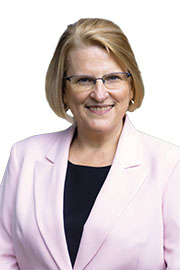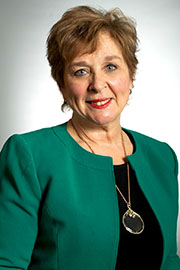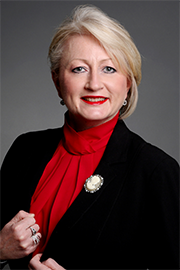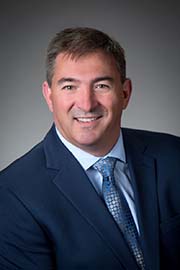- Feb/22/23 9:00:00 a.m.
Good morning. Let us pray.
Prayers.
Ms. Jones moved second reading of the following bill:
Bill 60, An Act to amend and enact various Acts with respect to the health system / Projet de loi 60, Loi visant à modifier et à édicter diverses lois en ce qui concerne le système de santé.
- Hear!
- Rabble!
- Feb/22/23 9:00:00 a.m.
- Re: Bill 60
It would be my honour to lead off today’s debate. At the start of government leadoff, I want to indicate that I will be sharing my time with my two parliamentary assistants, MPP Robin Martin, the member for Eglinton–Lawrence, and MPP Dawn Gallagher Murphy, the member for Newmarket–Aurora. This is the first piece of legislation that we will introduce together and I appreciate the opportunity to share some of the incredible work we’ve been able to accomplish improving access to care across Ontario. Both parliamentary assistants are strong advocates for their communities, and I’m proud of the team we lead together at the Ministry of Health.
Speaker, I would be remiss to say that this is a piece of work from individuals. It is a piece of work that is the culmination of engagement with health care practitioners, clinicians, stakeholders and indeed many, many individuals within the Ontario public service who had a part to play in making sure that your Ontario health care act is here today. I want to thank them very much for their input.
Earlier this month, our government released Your Health: A Plan for Connected and Convenient Care. The plan focuses on providing people with a better health care experience by connecting them to more convenient care options closer to home, while shortening wait times for key services across the province and growing the health care workforce for years to come.
The plan lays out a broad series of initiatives under three pillars: the right care in the right place, faster access to care, and hiring more health care workers. Designed to work together and work for people, these pillars will deliver connected and convenient care in hospital emergency rooms; in community settings like pharmacies, community organizations and doctors’ offices; in long-term-care homes; and through care delivered right in their own homes. Through the Your Health plan, our government is taking action to strengthen all aspects of health care, particularly where people access it most frequently. The proposed Your Health Act, 2023, supports our efforts to do so.
To provide the right care in the right place, this bill supports the expanded role of pharmacists, enabling people to connect to care closer to home, at their local pharmacy. Expanding the role of pharmacists can save a trip to the doctor, while giving family doctors and nurse practitioners more time for appointments with people who have more serious concerns. One example of this is allowing pharmacists to prescribe medications for 13 common ailments at no extra cost to patients. We have already seen great success in this initiative, with over 40,000 Ontarians accessing this service within the month of January. Pharmacies are one of the most accessible entry points in our health care system, and I look forward to working with our partners to explore other ways we can expand this work.
If passed, the proposed legislation would also result in amendments to certain health professions acts, which would permit the making of regulations that would allow certain out-of-province registered health professionals to practise immediately in Ontario while waiting for the registration with their respective Ontario health regulatory college. With new as-of-right rules, Ontario is the first province in Canada to allow health care workers from across the country to immediately start providing care. That’s the kind of innovative solution that will help bring reinforcements to the front lines of our health care system, because a doctor from British Columbia shouldn’t face bureaucratic delays to be able to practise in Ontario. These proposed changes are another way we are looking to reduce administrative barriers and to help allow qualified professionals to work in Ontario quickly and efficiently.
Under the leadership of the Ministry of Long-Term Care, we’re also proposing amendments to the Fixing Long-Term Care Act, 2021, to enable the making of regulations that would allow these health professionals to work in the long-term-care sector as well.
Another aspect of the proposed legislation is repealing the Independent Health Facilities Act and replacing it with new legislation: the Integrated Community Health Services Centres Act, 2023. The health care landscape has changed significantly since the enactment of the Independent Health Facilities Act in 1990. There is a need for a legislative framework that better responds to current surgical demands in a manner that is integrated with the broader health system, prioritizes safety and patient needs, and better reflects the modern health system landscape and priorities. This proposed change would support the expansion of surgical, procedural and diagnostic services in the community, which is another important part of our plan for convenient and connected care. We are reducing wait times by increasing access to surgeries and procedures such as MRI and CT scans, cataract surgeries, orthopedics, colonoscopies and endoscopies.
For over 30 years, community surgical and diagnostic centres have been partners in Ontario’s health care system. Like hospitals, community surgical and diagnostic centres are held accountable to the highest quality standards, the standards Ontarians deserve and expect across the health care system.
To further support integration, quality and funding accountability, oversight of community surgical centres will transition to Ontario Health. This improved integration into the broader health care system will allow Ontario Health to continue to track available community surgical capacity, assess regional needs and respond more quickly across the province and within regions where patient need exists. This is another way our government is making it easier for people to connect to care and access publicly funded services in more locations. And our government is clear: Ontarians will continue to use their OHIP card, not their credit card. Under Premier Ford, that will never change.
The final part of this bill is to enhance privacy obligations related to certain health administrative data through proposed amendments to the Freedom of Information and Protection of Privacy Act. These proposed amendments will benefit patients by supporting improvements to the health care system through linking de-identified data, while enhancing privacy protection, transparency and accountability for entities that collect, use and disclose government data. The Information and Privacy Commissioner, which provides oversight to ensure compliance with the proper handling of data, has collaborated in the development of our proposed approach.
Over the last several months, I have travelled across Ontario to the front lines of our health care system. I’ve had the privilege to meet and speak with many of our dedicated health care workers across Ontario. I’ve seen many examples of world-class care delivered by our exceptional health care providers.
But I have also seen that our health care system and our health care workers are under incredible pressure. And for too many people, health care is too hard to access. The status quo is not working. Ontarians deserve to be able to get care where and when they need it. This means more hospital and long-term-care beds in their communities. It means more diagnostic testing like MRIs and CT scans closer to home. And it means more skilled health care workers available to provide care.
We need to be bold, innovative and creative. We need to build on the spirit of collaboration on display across the health care sector. We need to have the courage to look to other provinces and countries, and borrow the best of what the world is already doing.
Again, we need to be clear: Insured Ontarians will always access the insured health care they need with their OHIP card, never their credit card. That is why our government announced the Your Health plan and the proposed legislation that would, if passed, support its implementation.
Through the Your Health plan, our government is continuing to prioritize making it easier for individuals and families to connect to the care they need, whether that’s by expanding access to services in our homes or community, giving people the choice to book more appointments online or take an appointment virtually, or ensuring a hospital bed is there when it’s needed. We are expanding access to services in health care settings that are close to home, such as pharmacies, or by expanding the number of community surgical and diagnostic centres. We will cut the wait times for key services like MRI and CT scans and cataract surgeries, as well as for other services such as emergency care and supports for mental health and addictions.
Our government is also moving forward with medical school expansion plans and training more nurses, adding training positions for physician assistants, allowing Canadian health care workers to come work in Ontario quicker, and adding more education spots for nurse practitioners. And our health care workers will be set up to work together as a team, making it easier for Ontarians to navigate care at every stage of their life.
Some of these changes will happen immediately as we take action to address pressing issues. Other changes will take time and will be phased in over the months and years ahead as we educate and graduate new health care workers and build new hospitals, community surgical and diagnostic centres, and long-term-care homes, while delivering care in new and innovative ways.
Over time, Ontarians will see and feel real improvements in the care they receive as we build a better health care system for the future. People will have more information and better tools to make the right decisions about their health, and it will become faster and easier for Ontarians to connect to the health services they need in their community or at home, no matter where they live.
I will now share my time with my outstanding parliamentary assistants—the member for Eglinton–Lawrence, followed by the member from Newmarket–Aurora—who will speak further to our government’s ongoing work to strengthen our health care system and provide Ontarians with more connected and convenient care.
- Hear!
- Rabble!
- Feb/22/23 9:10:00 a.m.
- Re: Bill 60
I would like to start by thanking the Deputy Premier and Minister of Health for her strong commitment to patient-centred care and her leadership in building a strong public health system that better addresses patient needs. I’m pleased to rise today in the House to speak to the Your Health Act on behalf of my constituents in the riding of Eglinton–Lawrence and as parliamentary assistant to the Minister of Health. This proposed legislation is another important step forward, ensuring that our health care workers can provide high-quality, connected and convenient care, now and in the future.
I would like to express my deepest appreciation for our world-class health care workers for their unwavering commitment and tremendous contributions to our province.
The Your Health plan, which is supported by this bill, builds on the significant progress our government has made over the last several years. Since 2018, we’ve increased health care funding in our province by $14 billion. We’ve expanded Ontario’s health workforce with more doctors, nurses and personal support workers. In fact, since 2018, we’ve grown our health care workforce by 60,000 new nurses and 8,000 new physicians. We’ve added more than 3,500 hospital beds across the province, including acute, post-acute and critical care beds. We’re building new hospitals in every region of the province, getting shovels in the ground for 50 new major hospital development projects.
And since 2021, we’ve provided funding to support the operation of 49 new MRI machines. I recently had an opportunity to visit a couple of the sites which are getting their first MRI machine in some of the smaller rural areas, and it’s very exciting for those hospitals and for patients in those areas because they won’t have to travel as far to be able to get an MRI.
We’re also adding nearly 60,000 new and upgraded long-term-care beds and investing nearly $5 billion over four years to hire more than 27,000 long-term-care staff, including nurses and personal support workers, and increasing the amount of direct care that residents receive in long-term care. We continue to make it easier and faster for individuals of all ages to connect to mental health and addiction supports by building on our Roadmap to Wellness. We’ve made it more convenient to book or take a health care appointment by launching virtual care options and adding more online appointment booking tools.
Our government is better connecting health care organizations and providers in our communities through our Ontario health teams. Ontario health teams bring together providers from across health and community sectors, including primary care, hospitals, community care, mental health and addiction services and long-term care, for example, who work as one collaborative team to better coordinate and share resources. Working together, they will ensure that people can move between providers more easily, directly connecting them to different types of care and providing 24/7 help in navigating our health care system.
Speaker, Ontario is making historic investments of more than $75 billion annually in health and long-term care. But it’s clear to all of us, and I think to all Ontarians, that money alone is not enough. We need to innovate and continue to build on our successes to create tangible, lasting improvements to our health care system and to the health care that is delivered to Ontarians. They deserve no less.
The Your Health plan is a decisive strategy to ensure Ontarians receive more convenient and connected care. The three pillars of the plan provide a solid foundation to continue modernizing and improving patient care in our province.
I’d like to speak to one of these pillars: the right care in the right place. Having the right care in the right place means supporting more care in people’s own homes and communities, leveraging virtual care, supporting targeted care needs with specialized supports, building on mental health and addictions supports and services, and creating stronger long-term care. It also means reducing pressures in our emergency departments.
When people have health care available in their communities and in ways that are convenient for them, they’re much more likely to seek and receive the treatment that they need when they need it, and to stay healthier. Delivering convenient care to people in their communities will help keep our province healthier by diagnosing illnesses earlier, starting treatment as soon as possible and keeping emergency room wait times down when people need urgent care.
One of the key parts of ensuring the right care in the right place is expanding care at our local pharmacies. Pharmacists in Ontario are highly trained, highly trusted and regulated professionals. They are often the closest, most convenient option for health care in communities across Ontario. Throughout the last few years, pharmacists have really played a critical role in supporting patients across the province by supporting COVID-19 testing and vaccination efforts and educating patients about medication and treatment options.
Pharmacists continue to offer families the kind of convenient care close to home that we know Ontarians are looking for. We are expanding the role of pharmacists by increasing their scope of practice so that families will be able to connect to care closer to home at their local pharmacies, such as enabling them to prescribe medications for 13 common ailments. These initiatives are part of our ongoing work with front-line pharmacists, nurses and other regulated health workers to expand their scope of practice in ways that make it more convenient and faster for people to get care in their community.
Another significant way we are working to provide the right care in the right place is expanding the delivery of home and community care services to help more people connect to the care they need in the comfort of their own home. From more nursing and personal support services, caregiver supports and respite services, bereavement and behavioural programs to assisted living services, adult day programs and programs for people with brain injuries, work is under way to provide faster and more convenient access to the care that people need.
The province is also working with our Ontario health teams and home and community care providers to create new and innovative programs for people wanting to connect to care at home, to help ensure people receive these important services sooner. We’re making it faster and easier for young people to connect to mental health and substance use support, primary care, social services and more by adding eight new youth wellness hubs to the 14 that are already operating in communities across the province.
We’re also expanding One Stop Talk, a virtual walk-in counselling service for children, youth and families that provides access to mental health care with a clinician by phone, video, text or chat.
Through our new Health811 service, Ontarians can chat online or call 811 to talk to a registered nurse, day or night, for free and in multiple languages. Health811 can also help people find services like community health centres, mental health support or a walk-in clinic close to where they live. Future improvements planned for Health811 will allow people to create a confidential profile, schedule video visits with clinical advisers and manage their health more easily through accessing their own personal health records and tailored information about the services and programs available through Ontario health teams, including mental health and addictions supports. We’re expanding and making investments in Ontario health teams to further support connected care, including virtual and digital care.
Speaker, Ontario already leads the country in how many people benefit from a long-term, stable relationship with a family doctor or primary care provider. But we’re doing more by expanding access to team-based models of primary care, with up to 1,200 more physicians being added to family health organizations to provide comprehensive primary care services. When family physicians work in a team model alongside other family physicians, nurses, dietitians, social workers, pharmacists and other health care professionals to deliver programs and services, you get better continuity of care and more access to after-hours care.
We’re increasing the number of spots for physicians to join a team model of care through the expansion of existing family health organizations and allowing new ones to form. This will add up to 1,200 physicians in this model over the next two years, starting with an additional 720 spots for physicians interested in joining a family health organization model in 2022-23 and 480 spots in 2023-24. These family health organizations will be required to provide comprehensive primary care services, extend evening and weekend hours of practice, and provide more weekend coverage so you can access a family physician when you need it.
Team models of primary care have demonstrated how bringing health care providers together into one team can improve the patient experience and how you access care. We’re building on this through our Ontario health teams. Teams of primary care providers regardless of model will be central to all Ontario health teams across the province.
Dr. Mekalai Kumanan, president of the Ontario College of Family Physicians, said, “We are pleased to see the Ontario government recognize the important role of family doctors and primary care in our health system. The actions taken in this plan will improve local primary care planning, access to team-based care, and will support the training and development of more family physicians in Ontario. These are aligned with the recommendations from our plan of action, Solutions for Today: Ensuring Every Ontarian Has Access to a Family Doctor. Today’s announcement is a step in the right direction, and we look forward to working closely with the government to ensure all Ontarians have timely access to a family doctor.”
These are some of the important innovations that our government is putting in place, expanding what is possible for health care in Ontario and delivering a new level of care and convenience to families across Ontario.
I will now take the opportunity to turn things over to the member from Newmarket–Aurora, parliamentary assistant to the Minister of Health, to tell us how patients in Ontario are being provided with a better health care experience, which is supported by our proposed legislation.
- Hear!
- Rabble!
- Hear!
- Rabble!
- Hear!
- Rabble!
- Feb/22/23 9:20:00 a.m.
- Re: Bill 60
Thank you to the Minister of Health for introducing this legislation and for providing more details about how we are moving in the right direction to improve patient care in our province.
I appreciate the opportunity to speak further about this critical priority for our government. This is the first time I’m rising in this House as parliamentary assistant to the Minister of Health to speak to legislation that will improve the quality of care for patients across this province. I’d like to take this opportunity to thank my constituents, the people of Newmarket–Aurora, for this incredible opportunity.
The proposed Your Health Act, 2023, is an important piece of legislation to support better patient care. It will enable elements of the Your Health plan, which provides a very strong and comprehensive blueprint for improving our health care system.
The member from Eglinton–Lawrence and parliamentary assistant to the Minister of Health spoke about one of the plan’s three pillars: the right care in the right place. Another one of the key pillars is faster access to care. We know that the sooner people have access to care they need, the better the outcomes.
Reducing wait times for surgeries and procedures is one of the focal points of our efforts to ensure Ontarians have faster access to care. We know that lengthy wait times for surgeries are one of the biggest challenges in our province. While Ontario leads the country in the number of people who receive the surgery they need for hip and knee replacements, we still aren’t meeting the right benchmarks. So we are doing more to make it easier and faster for Ontarians to get the publicly funded surgeries and procedures that they need. By further leveraging the support of community surgical and diagnostic centres, we will eliminate surgical backlogs and reduce wait times.
As a first step, we are tackling the existing backlog for cataract surgery, which has one of the longest waits for procedures in the province. Four existing community centres located in Windsor, Kitchener-Waterloo and Ottawa have been identified as successful applicants to a recent call for applications. These centres will be able to support an additional 14,000 publicly funded cataract surgeries every year. These additional volumes make up to 25% of the province’s current cataract wait-list, which will help significantly reduce the number of people waiting outside appropriate wait times for this surgery.
We are also investing more than $18 million to existing centres to cover care for thousands of patients, including more than 49,000 MRIs and CTs, 4,800 cataract surgeries, 900 other ophthalmic surgeries, 1,000 minimally invasive gynecological surgeries and 2,845 plastic surgeries. I would like to emphasize that this is all publicly funded. The cost of receiving these insured services in community surgical and diagnostic centres is covered by an Ontario health card, never your credit card.
The status quo is not working. We need to be bold, innovative and creative. We need to build on the spirit of collaboration on display across the health care sector. We need to have the courage to look to other provinces and countries and borrow the best of what the world is already doing. We will do this by increasing access to services in health care settings near you, like in pharmacies, by increasing the number of assessments and treatments that can be provided by your local pharmacist without a doctor’s appointment, by expanding the number of community surgical and diagnostic centres, by cutting wait times for services like MRI and CT scans and cataract surgeries and by expanding access to home and community care services so you can stay safely at home.
We know the only thing better than having care close to home is having care right in your home. We have heard loud and clear that you and your family want better and faster access to home care services. Last year, we dedicated over $1 billion to expand access to home care services over the next three years. This funding will benefit nearly 700,000 families who rely on home care annually by expanding home care services while recruiting and training more home care workers. It will help prevent unnecessary hospital and long-term-care admissions and shorten hospital stays. Most importantly, it will provide you and your family with the choice to stay in your home longer.
We’re also working with Ontario health teams and home and community care providers to establish new home and community care programs. Your home care plan should and will start as soon as you step foot in the hospital or other health care settings. Connecting home and community care through these teams will expand the reach of health care professionals all the way to your front door, and will ensure you start to receive these important services sooner.
These investments and initiatives are only part of the solution. We know we need to do more to expand and improve home care services across the province, particularly in rural and remote areas. We will continue to make investments to ensure you and your family are able to connect to home care more quickly and easily when you need support.
To quote Cynthia Martineau, the CEO of Home and Community Care Support Services, “Home and community care is an integral part of our health care system. We look forward to working with our government and community partners to ensure programs and services are in place to help people be healthier at home through connected, accessible patient-centred care.”
Sue VanderBent, the CEO of Home Care Ontario, said “Home Care Ontario applauds the government for recognizing the critical role home care plays in Ontario’s health system. Today’s plan says it best—’The only thing better than having care close to home, is having care in your home.’ Now is the time to put those words into action. The government can capitalize on its historic investment by fast-tracking funding to home care in order to stabilize and grow the sector.”
Faster access to emergency care is another key priority. We continue to find innovative ways to reduce wait times and make it faster and easier for Ontarians to access timely care. Part of this solution is to divert individuals from emergency rooms when it’s safe to do so and provide them care and treatment in the community. In more than 40 communities across the province, we have approved 911 patient care models for mental health and addictions and palliative care patients. That provides paramedics more flexibility to treat certain patients who call 911 at home or on scene in the community, rather than in the emergency rooms.
And we are having success. Patients diverted from emergency rooms through one model received the care they needed up to 17 times faster, with 94% of patients avoiding the emergency room in the days following treatment. Based on the proven success of the program, we’re now working with key partners to expand these models to different patient groups, such as people with diabetes and epilepsy. These initiatives are helping to divert patients from emergency rooms and reducing repeat hospital visits, which helps reduce patient wait times and ensures these hospital beds are available for those that need them most.
We are also helping to reduce ambulance off-load times at hospitals through investments to support dedicated off-load nurses and other health care workers to allow paramedics to drop off patients more quickly and be available to get their next call faster; building new hospitals and adding more beds; relieving pediatric pressures on hospitals; improving and expanding long-term care; supporting end-of-life care; and expanding access to mental health and addictions services in our communities. These are further priorities under the Your Health plan which will ensure Ontarians have faster access to the care they need.
Speaker, the proposed legislation also supports another key pillar of our plan for connected and convenient care: hiring more health care workers. Ontario has one of the most dedicated and highly trained health workforces in the world. Day in and day out, well-trained and well-supported doctors, nurses, personal support workers and more keep Ontarians safe and healthy. And hiring more health care professionals is the most effective step to ensure individuals and families are able to see a health care provider where and when they need to.
One way we are supporting this is by expanding the Ontario Learn and Stay Grant. We know that there are unique health care challenges in small, rural and remote communities and that recruiting and retaining health care workers in these regions requires a dedicated approach. Last spring, we launched the Ontario Learn and Stay Grant to help these communities build their own health workforces. This program covers the costs of tuition, books and other direct educational costs for post-secondary students who enrol in high-priority programs in more than a dozen growing and underserved communities and commit to work in those communities when they graduate. Speaker, I have to say that this program has been so popular at the ROMA conference and, in speaking with many of our rural towns and municipalities, how happy they were with this program. I believe that speaks loud and clear about the impact of this type of program. This year we are expanding the program, beginning in spring 2023, targeting approximately 2,500 eligible post-secondary students who enrol in high-priority programs, such as select nursing, paramedic, and medical laboratory technology or medical laboratory science.
We’re also taking steps to help those who want to work in Ontario. There are many health care workers from across the country and from across the world who want to work right here in Ontario, and we are making innovative changes to make it easier and faster for them to begin working and providing care to people in Ontario. With proposed new as-of-right rules, Ontario will become the first province in Canada to allow health care workers registered in other provinces and territories to immediately start providing care without having to first register with one of Ontario’s health regulatory colleges. This change will help health care workers overcome excessive red tape that makes it difficult for them to practise in Ontario.
We will also help hospitals and other health organizations temporarily increase staffing when they need to fill vacancies or manage periods of high patient volume, such as during a flu surge. This will allow nurses, paramedics, respiratory therapists and other health care professionals to work outside of their regular responsibilities or settings, as long as they have the knowledge, skill and judgement to do so.
We are continuing to make it easier for internationally trained health care professionals to use their expertise here in Ontario, and we are working closely with regulatory colleges to make it easier and faster for qualified health care professionals to work here as well, without facing unnecessary barriers and costs, including requiring colleges to comply with time limits to make registration decisions. Our many initiatives to recruit, retain and optimize health care workers will ensure we have the right number, type and distribution of health care professionals in our province to meet the health care needs of Ontarians.
To ensure that we are building a system that works for Ontarians, the province will continuously measure our progress, including tracking the ability of people to access services like primary care and mental health care.
Something I wanted to add here is that recently in my own community of Newmarket–Aurora, Southlake Regional Health Centre just opened 12 additional mental health beds. That is due to a $6.5-million investment our government made to Southlake, approximately less than two years ago, and they just opened two weeks ago. The space is just phenomenal. This is what we’re doing to help people with mental health and addictions challenges in my community, and we’re doing that across the province.
We’re also tracking the ability of people to access and their wait times for MRIs and CT scans, and the time spent waiting in the emergency room. We will also track how we are expanding our health care workforce, to ensure it grows as our population in Ontario grows and ages. I know in my community alone, we have a very high aging population. We have over 300,000 people coming into this province each year. This is why we need to ensure our health care workforce can grow. The way our population is growing is critical.
Speaker, as we continue to roll out the Your Health plan, which is supported by the proposed legislation introduced today, we remain focused on one fundamental goal: to provide Ontarians with more connected and convenient access to health care, when and where they need it.
On February 2, the ministry released Your Health: A Plan for Connected and Convenient Care. The plan outlines an approach to making health care more accessible across all of our care options: home or community, primary care, virtual or hospital care. The plan includes actions under the three pillars: the right care in the right place, faster access to care and hiring more health care workers. The result will be a health care system that is easier to navigate, where people have more timely access to all forms of care.
Yesterday, Minister Jones introduced the Your Health Act, 2023. It covers four topics: modernizing the community surgical system, interjurisdictional registration of health professionals, patient assessments by pharmacists and data integration.
The first part of this legislation is modernizing the community surgical system. As part of the Your Health Act, the government is leveraging community surgical and diagnostic centres to reduce wait times while ensuring that patients can use their OHIP card to access insured services.
This modernized legislative framework for community surgical and diagnostic centres would ensure connected and convenient patient care through better integration of these centres in the broader health system by repealing the Independent Health Facilities Act, 1990, and replacing it with the Integrated Community Health Services Centres Act, 2023.
As the province moves to expand the types of surgeries and procedures being done in the community, it will ensure the new community surgical and diagnostic centres have in place the highest quality standards with strong oversight. The newly proposed Integrated Community Health Services Centres Act, if passed, will:
—protect patient safety through strengthened quality assurance and oversight of community surgical and diagnostic centres;
—ensure that no centre can refuse an insured service to a patient who chooses not to purchase uninsured upgrades, and no patient can pay to receive insured services faster than anyone else;
—ensure that patients who are not able to have their complaints addressed at a centre can seek help from the Ontario Patient Ombudsman; and
—protect the stability of health human resources in public hospitals, as centres will work with health system partners to promote optimal patient care pathways.
The second part of the legislation: interjurisdictional registration of health professionals. These changes would enable, as I noted earlier, as-of-right rules, allowing physicians, nurses, medical laboratory technologists and respiratory therapists in other Canadian jurisdictions to begin practising in Ontario hospitals, long-term-care homes and potentially other settings without delay.
Through amendments to a number of acts, the government is making it easier for health care professionals with the necessary knowledge, skills and judgment to start working in Ontario as soon as possible. Health care professionals would even be able to immediately begin practising while they wait for their registration with their respective Ontario health regulatory college to be completed. And with fewer administrative barriers, more health professionals will be able to come to Ontario more quickly and efficiently to work.
The third part of the bill deals with patient assessments by pharmacists. To support pharmacists’ expanded roles in the health system, the government is proposing to allow pharmacists the ability to independently initiate prescriptions based on their own assessment of a patient’s health when providing medication therapies.
The fourth part of the bill deals with data integration. The amendment creates an exciting opportunity to strengthen protections for personal health information and link data for research purposes, to help make better programs and services for all Ontarians. Health, education and social services data, for example, can be linked to create insights that wouldn’t otherwise be unearthed. We’re pleased that the first external body to be given this new status is the internationally renowned, Ontario-based Institute for Clinical Evaluative Sciences. This is a trusted organization that has produced stellar research for decades.
Importantly, the data that will be linked is aggregate and de-identified, meaning it’s not personal information. Moreover, the Information and Privacy Commissioner oversees the whole process to ensure that personal information is protected. This is an important step in improving our health care system.
We hope we can count on the support of all members of this great House to support this act.
- Hear!
- Rabble!
- Feb/22/23 9:50:00 a.m.
- Re: Bill 60
I want to thank both parliamentary assistants for their great remarks. They really understand, talking to all Ontarians, how important strengthening our health care system is.
In fact, I know that not too long ago I was able to announce with Minister Downey an MRI and CT scanner at Royal Victoria hospital, and PA Martin was there at GBGH to announce some great funding for them. That is a growing area, and critical infrastructure is needed at the hospital. I was wondering if PA Martin could elaborate a little bit more on that great announcement that she did at GBGH.
- Hear!
- Rabble!
- Feb/22/23 9:50:00 a.m.
- Re: Bill 60
Thank you very much for the question. Obviously, a lot of this is still going to be spelled out in regulations, but the oversight is determined—we’re going to make sure that we have oversight. We have the Patient Ombudsman, of course, if people have a concern.
There’s also, of course, the Commitment to the Future of Medicare Act. We want to make sure that people are able, if there is some concern, to raise that concern to an appropriate person who will deal with it. In the legislation, each of the entities would have to have their own complaint mechanism.
All of this will be under the auspices of Ontario Health because it will be integrated into our health care system. That is the whole point of that part of the legislation: to integrate these community clinics into our broader health care system.
The important part of the announcement was that Georgian Bay General Hospital has never had an MRI there. We were able to provide the funding to continue operations and hire staff, etc., to have an MRI right there on the premises of the hospital. This is among 49 MRIs we’re putting in community hospitals. I know the other parliamentary assistant, PA Gallagher Murphy, has done some announcements as well in various venues.
I also went to the riding of Hastings–Lennox and Addington and announced an MRI in that hospital, which had never had one. This will make a huge difference for convenience for people to get services closer to home, and that’s part of the plan.
- Hear!
- Rabble!
- Hear!
- Rabble!
- Feb/22/23 9:50:00 a.m.
- Re: Bill 60
I would like to know—in your bill, you are setting up for basically private, for-profit, investor-owned corporations to start providing care. The care will continue to be paid by the government, but it will be offered by private, for-profit, investor-owned corporations. Where in your bill is the accountability? Where can we make sure that there are standards in place so that patients do not get over-billed or sold add-ons? What kind of inspection and oversight is present in your bill?
- Hear!
- Rabble!
- Feb/22/23 9:50:00 a.m.
- Re: Bill 60
Thank you for the presentation.
The Standing Committee on Finance and Economic Affairs just finished travelling the province for pre-budget consultations. We heard from many delegations who are deeply concerned about the impacts of Bill 124 and the health care human resources crisis that has been created by such. Not once did the committee hear any support for Bill 124. Not one delegation supported this demeaning, degrading and, as one delegation called it, humiliating piece of legislation. We heard about the nurses who left and the health care human resources crisis that needs to be addressed. There’s an opportunity here for this government to undo the damage through Bill 60 that they have created with Bill 124.
My question is: Why is this government more concerned about health care profiteers, instead of people who need care from highly skilled nurses?
- Hear!
- Rabble!
- Feb/22/23 10:00:00 a.m.
- Re: Bill 60
Thank you very much to the member opposite for the question. Frankly, what we’re concerned about is making sure that people get health care quickly, conveniently, in their communities. That’s what this legislation is all about. In the last election, I believe Bill 124 was an issue of discussion. We did have an election result which re-elected this government with an even greater majority. I think the people have spoken.
If you talk to them, the people who receive services want our health care system to be better, and that’s what this government is focused on doing. That’s what this Minister of Health is focused on doing: making a better, more convenient health care system to provide services to all Ontarians and good results for all Ontarians so we have better health care.
I understand that people like to use words in debate. They like to use the words “private” and “public,” but I think those words confuse people, because most people don’t have the same meaning in mind.
I heard Dr. Jane Philpott say this on TVO’s The Agenda when she mentioned these. They were having a debate about this whole issue, about public versus private health care. People don’t care about that issue. What they care about is whether they’re paying with their OHIP card, and that is the most important thing. You will continue to pay for health services with your OHIP card.
Ontarians are tired of waiting for health care. We want them to get their health care sooner. It’s better for their health. It’s better for diagnostics. It means they have a better chance of having a great outcome, and that’s what we are—
- Hear!
- Rabble!
- Feb/22/23 10:00:00 a.m.
- Re: Bill 60
This is a rather sad day for me, Speaker. This is a day that I knew was coming, but this is not a day that I was looking forward to.
I come from the party of Tommy Douglas, a party that believes in medicare, a party that believes that care should be based on needs, not on ability to pay. With this bill today, this is about to go out the window. This government is taking a step that we’ll never be able to backtrack on; that will destroy a program that defines us as Canadians, a program that defines us as Ontarians—that we care for one another, that you don’t have to have money to receive the care you need. This is the Canadian way. This is something that we’ve built for decades, and today, we’re taking a huge step to destroy it.
I want to talk a little bit about clarifying the public and credit cards and health cards in all of this. Right now, in Ontario, we have publicly owned facilities. Publicly owned facilities are community health centres, public health units, that kind of stuff. We have privately owned not-for-profit facilities. Those are our hospitals. Our hospitals are owned by corporations, but they are not-for-profit. There are four of them that were granted when medicare came into place, but they play a very, very small role; 152 hospitals in Ontario are not-for-profit.
Then we have physician-owned small businesses. Those are most doctors’ offices. They care for 1,000 or 2,000 patients. They pay for their rent and the cleaning and the secretary and maybe a nurse, and they are the doctor’s office. They are physician-owned small businesses. That’s not what we’re talking about in this bill.
In this bill, we are talking about private, for-profit, investor-owned corporations. Those are corporations that have nothing to do with care. They are willing to invest the millions of dollars it will take to build surgical suites, to build MRIs and everything else that the government wants to privatize, to make for-profit. They are willing to invest that money. Why? Because there is a lot of money to be made off of the backs of sick people. How do they do this? Well, sure, the surgeons, the physicians will bill OHIP for their services, like they would in a hospital, like they would in their private clinic, but what those private, for-profit, investor-owned corporations do is that they use the power imbalance that exists between the physician, the specialist, who’s about to put a laser to your eye, who’s about to cut open your knee, your hip, your whatever—there is a real power imbalance between the person who provides the care and the person who needs the care. What those private, for-profit, investor-owned corporations do is they use this power imbalance to ask for money, and there’s no shame in asking for a ton of money from people who are sick, from people who need care.
Unfortunately, it is already happening a little wee bit in Ontario right now—more than a little wee bit; it’s already happening in Ontario. Now, we are about to open the door to those private, for-profit, investor-owned corporations that are just biting at the bit to come into Ontario, because Ontario is a very lucrative market where it doesn’t matter if they will have to put upfront millions of dollars to set up those surgical suites. They can guarantee their investors double-digit returns for years on end. And we are not talking 11% returns here; we are talking into the 25%, 30% returns. So if you have the money to invest in those million-dollar, private, for-profit, investor-owned corporations, they will guarantee you a huge payback. The payback will come from sick people, like you and I—I don’t wish harm upon anyone. I wish we could all be healthy all the time, but we know that this is not the reality. Some of us will get sick; some of us will need care. Then they will charge, and they will charge lots. This is where most of their profit will be made. Some will do double billing—not that many, I hope, but it will be there.
When we look at some of the myths that they are putting forward, the first one is that those new private, for-profit, investor-owned corporations will alleviate wait times in the public system. There is tons of evidence that shows that this is not the case. Australia was the last one to introduce a parallel system, in 1997, and we’ve seen what happened. Basically what happened was they made the wait times worse for most of us. A few rich people will pay for the extra and will get faster care, but most Ontarians won’t. For most of us, it will mean longer wait times.
Myth number two: Private, for-profit ownership of health care facilities leads to better health outcomes. This has been studied to death also. The body of evidence is really strong. I can name you study after study that shows that the profit model does not incentivize high-quality care. In fact, for-profit delivery has been associated with an increased mortality.
There are some who will have you believe that private, for-profit, investor-owned corporations will make health care more efficient. All of those have been studied. All of those have been looked at. None of those pull through. They are not more efficient, and the list goes on.
Today, with this bill, we are opening up the door to private, for-profit, investor-owned corporations who will deliver the care. The single payer will stay in place. The Ontario government will continue to pay for medically necessary care, for medically necessary surgery. They will continue to pay. What will change is that those corporations will find hundreds of ways to make you pay.
I have the example of Mr. Dutton, who—I need to wrap up—
- Hear!
- Rabble!
- Feb/22/23 10:00:00 a.m.
- Re: Bill 60
Speaker, I have to use these reading glasses now, but I don’t need the reading glasses to see through the nonsense being peddled over here. Let’s be clear: They said they scanned and they asked, “Who could help us? Who could help relieve the backlog of surgeries?” There was no public tendering. There was no RFP. The ministry reached out directly to Tory-friendly, private, for-profit health clinics, like the Herzig Eye Institute in Ottawa, which is going to get 5,000 surgeries and charge 33% more for them.
Who protects the taxpayer? Who protects the taxpayer from this gouging of the public purse? How could this possibly be a Conservative government when they light the public money on fire and disrespect health care workers? This bill is a disgrace.
- Hear!
- Rabble!
- Feb/22/23 10:00:00 a.m.
- Re: Bill 60
I’d like to thank the member from Whitby for the question. That is what this is about: giving people quality of life. As we spoke to in our speeches earlier, it is all about wait times. We have better outcomes for patients if they can get the MRIs and the CT scans faster. The faster they get those, the better outcomes for the people, the better quality of life that they may have. So—
- Hear!
- Rabble!
- Hear!
- Rabble!
- Feb/22/23 10:00:00 a.m.
- Re: Bill 60
Speaker, good morning. You’ll know out of the great representation that you do for the riding of Ajax that we have close to a million people in the region of Durham. They rely on, in many instances, community surgical and diagnostic centres in the region of Durham. We have across that region, as you know, probably about 20 of them at the present time, including the Oshawa community clinic that’s in close proximity to my riding.
Can the member from Newmarket–Aurora speak a little bit about how this proposed legislation further leverages community surgical and diagnostic centres to help the million people in the region of Durham?
- Hear!
- Rabble!
- Feb/22/23 10:00:00 a.m.
- Re: Bill 60
One of the things I’ve heard repeatedly from the opposition is that this is going to cost people out of pocket, that somehow OHIP isn’t going to cover all these things and that people are going to have to pull their credit card out all the time. Is there anything in this legislation that protects Ontarians from any extra billing?
- Hear!
- Rabble!
- Feb/22/23 10:10:00 a.m.
I’m pleased to rise about a constituent of mine from Greely: Anna Bailie. Anna is a tireless advocate for Ontarians with congenital heart defects and has been working with other board members of the Canadian Congenital Heart Alliance to raise awareness through Congenital Heart Defect Awareness Week, which took place from February 7 to 14. This is a part of February itself being Heart Month.
Congenital heart defects are structural problems that are present in the heart from birth. While once considered a disease that was fatal during childhood, progress has been made over the last 50 years in diagnoses, surgery, and interventional catheter-based procedures. Because of these advancements, about 90% of children born with heart defects survive into adulthood.
For Congenital Heart Defect Awareness Week, the Canadian Congenital Heart Alliance organized several events to raise awareness, including lighting monuments across Canada red and giving proclamations in major cities.
I would like to thank Anna Bailie and the Canadian Congenital Heart Alliance for their hard work and advocacy to educate Ontarians about congenital heart defects and to continue to raise money for research to ensure that Canadians with congenital heart disease can receive the most innovative treatment.
As Ontarians, let’s support the hard work of Anna Bailie and the Canadian Congenital Heart Alliance.
- Hear!
- Rabble!
- Feb/22/23 10:10:00 a.m.
- Re: Bill 60
Thank you to the member from Nickel Belt.
Second reading debate deemed adjourned.
- Hear!
- Rabble!













